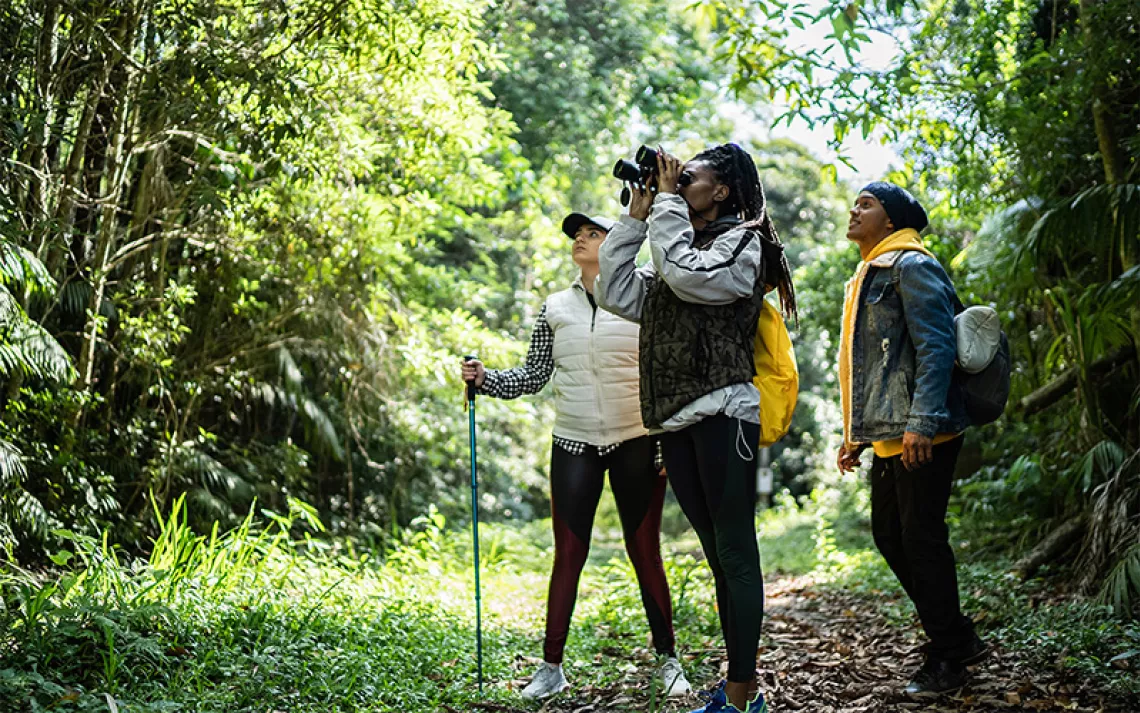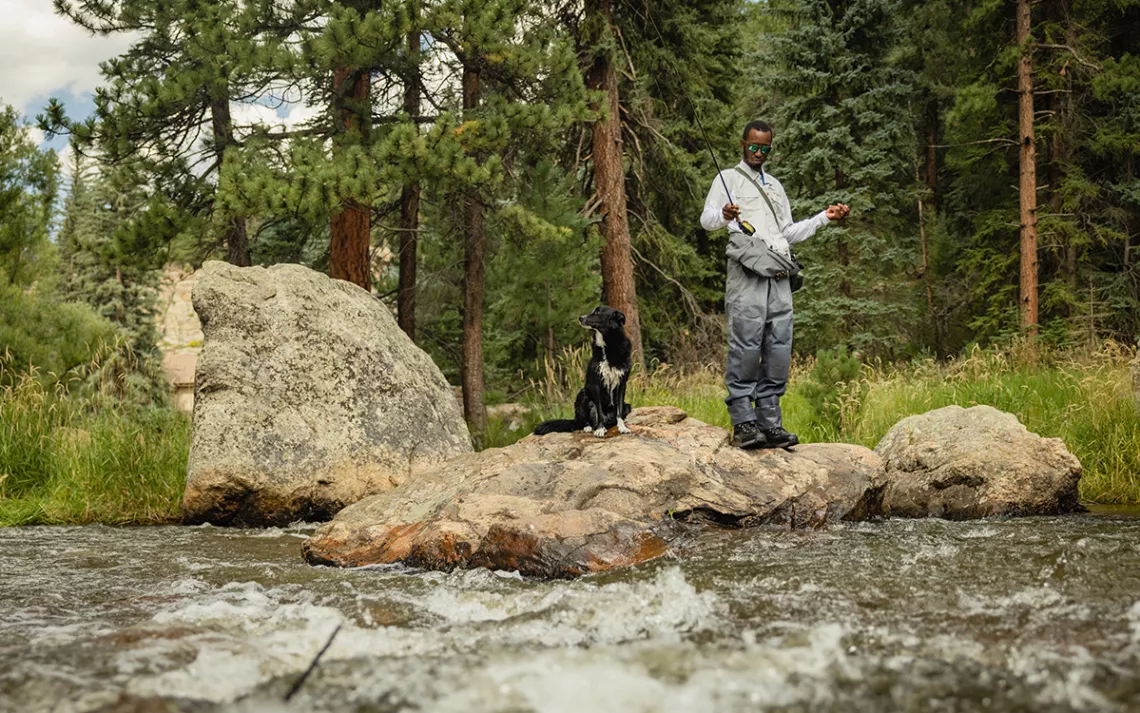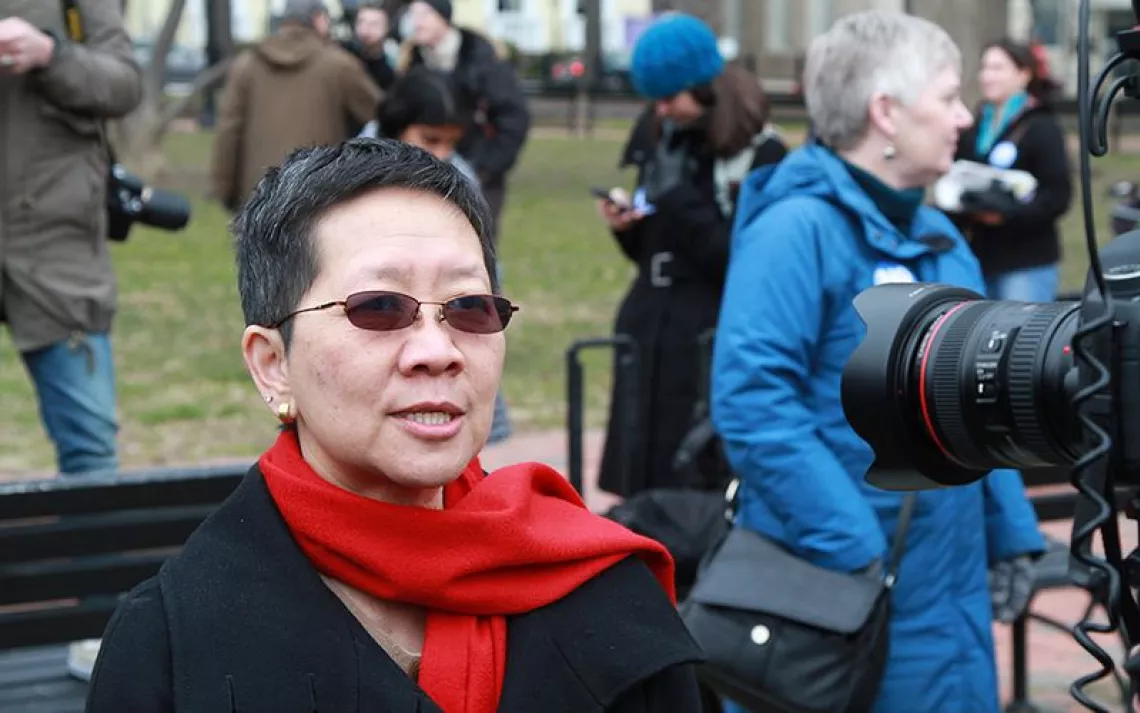Meet the Teens Changing the Face of Conservation Careers
A successful—but threatened—youth program could help diversify the natural resources workforce

P-CREW participants live in the field for weeks, forging close bonds. | Photo credit: Sierra Institute
As it is for many teens, Megan Fletcher’s world was largely where her feet could carry her: around town, the local park, two miles down a trail to the reservoir. In 2018, with not much to do after junior year, Fletcher applied for the Plumas Conservation, Restoration, and Education in Watersheds youth corps (known as P-CREW). “That sounds fun. I get paid to go hang out in the woods all summer,” she recalled thinking. Without knowing it, she was part of a larger movement aimed at closing the outdoor workforce equity gap.
P-CREW was designed to bring together rural and urban teens—especially those who live within the northern Sierra watershed and its downstream recipient cities, like Berkeley and Oakland. “Without the P-CREW program, I definitely would not be in this career at all,” said Fletcher, now assistant coordinator for the program at the Sierra Institute for Community and Environment.
Equity in the outdoors isn’t just about access—taking a classroom of city kids to the woods. Consider Fletcher, who grew up surrounded by woods but had never seriously considered a career stewarding nature. Any attempt to drive greater equity in outdoor careers must also focus on labor.
Most people working in natural resources look demographically the same: white, male, able-bodied. For instance, only about 13 percent of fire workers in the US Forest Service are female. A 2015 study found that in mainstream environmental organizations, only 14 percent of staff were ethnic minorities. This does not reflect America: According to recent census data, 50.4 percent of the population is female, and 42.2 percent is a racial or ethnic minority, or multiracial.
Studies regularly cite lack of exposure to nature as a key barrier to joining the natural resources workforce. But other obstacles also contribute. Nia Morales, a University of Florida conservation social scientist, highlighted two major deterrents: structural issues (like financial barriers) and social issues such as “feelings of isolation,” “lack of representation of people that look like them or have their same lived experiences in the field,” or “overt discrimination.”
Jasmine K. Brown, a doctoral researcher at Michigan State University, studies such barriers in the history of forestry. “Communities of color have not had access to the educational programs that are required within the forestry, natural resources, and conservation space. We were intentionally, systematically excluded from these fields, and in some ways, still are today,” she said.
To truly change our societal relationship with the earth, the next generation of environmental stewards must come from across society and not from a narrow demographic sliver. P-CREW and youth corps programs like it offer one model for mitigating the barriers—giving teenagers of many genders, races, socioeconomic situations, and backgrounds a fighting chance to pursue natural resources careers.
Take Shelbi Montgomery. She overheard her high school counselor discussing P-CREW with other kids and decided to look into it. A member of the Pit River Tribe, Montgomery lives with her grandmother and other family in rural Northern California, two hours from the Sierra Institute headquarters. Montgomery was excited by how much money P-CREW paid—up to $2,100 for a five-week session. She wanted to help with household expenses and save for a car so she could get a job or ferry her siblings to school.
The summer of 2023 transformed her. Montgomery lugged trees into piles, cleaned trails, smelled geysers so putridly sulfurous she retreated to the crew car. She loved how active she became, far more than in her daily life. She became close friends with the other 16-to-18-year-olds, some hailing from places as culturally and geographically distant as Los Angeles and the Bay Area.
Montgomery appreciated that P-CREW leaders, including an Indigenous Sierra Institute staff member, taught traditions of other tribes in the area. “It’s really important to teach the new generation of Indigenous people that, you know, we are still here, and that our opinions matter,” she said. “Because, you know, this is our land, where we were first.”
The institute has committed to filling 25 percent of future P-CREW cohorts with tribal youths. Already, the program much more closely matches US demographics than does the mainstream natural resources workforce. Over P-CREW’s nine years, 38.6 percent of its 228 participants have been racial or ethnic minorities or multiracial. And 50.8 percent have identified as female or nonbinary.
Even if marginalized kids find an entry point to natural resources careers, they can struggle to stay in the field. “$2,100 is a lot for a high schooler,” Fletcher, the P-CREW coordinator, said. “It might actually not be for somebody who has to pay bills as a high schooler.” When the local McDonald’s pays $18 an hour, she says, it can be hard to commit to a career that, at first, can be seasonal and low-paid.
To show kids what a path forward looks like, P-CREW recruits mentors. Participants work on projects alongside professionals from the Forest Service and National Park Service. (My brother is a National Park Service employee who has worked with P-CREW participants.) Sierra Institute also hires crew leaders to camp with and train the teenagers, typically college students well on their way to natural resources careers.
One P-CREW alumnus, Nicolas Sundu, grew up in Berkeley and attended a high school roughly double the size of Fletcher’s town. Talking to his crew leaders—who were pursuing advanced degrees and had worked in Yosemite, Utah’s Canyon Country, and the Rocky Mountains—changed his outlook. “It was kind of inspiring to hear where they were going,” Sundu said. They described a career he’d never heard of: wilderness management. Now Sundu studies forestry at Oregon State University with a focus on management.
The Sierra Institute would love to expand the program, which serves around 40 teens a summer. But stringing together enough grant money and donations is already a challenge. Then there’s hiring. This year, Fletcher struggled to find enough crew leaders, in part because of some of the barriers P-CREW was created to address: not enough awareness that such positions exist and a long list of required skills, including leadership, project management, a strong grasp of field safety, and, of course, the technical know-how to do things like wield saws or clear trails. This past Earth Month, the Sierra Institute concluded it needed to scale back P-CREW offerings for 2024.
For Fletcher, the stakes are high. She believes everyone deserves to experience the outdoors as she has. P-CREW started her on the path to the certifications, training, and even equipment acquisition. Fletcher wants to extend that opportunity to as many young people as possible. But she knows too well the myriad obstacles preventing so many underrepresented kids from even finding out about natural resources careers, much less embarking upon them. “I grew up really poor. Just a jacket alone is really expensive. I didn’t even have that until I started the fuels crew when I was 19,” she said, referring to another Sierra Institute crew.
There was a moment when Fletcher first realized she wanted this kind of work for her career. Her P-CREW group was in the Caribou Wilderness, a 30-minute drive from her town. She hadn’t known it existed. It was sweltering, and Fletcher had never backpacked before. She was exhausted, shouldering a 30-pound pack. Then she cleared the trees, and a crystal-blue lake spread before her. She had never seen anything like it: the water so blue, craggy mountains framing the lake. She couldn’t wait to swim.
“That was right in my backyard, and I didn’t know,” Fletcher said. She remembers thinking, “I don’t see myself doing anything else.” Soon, she’ll start a bachelor’s degree in ecosystem restoration and applied fire management.
 The Magazine of The Sierra Club
The Magazine of The Sierra Club







